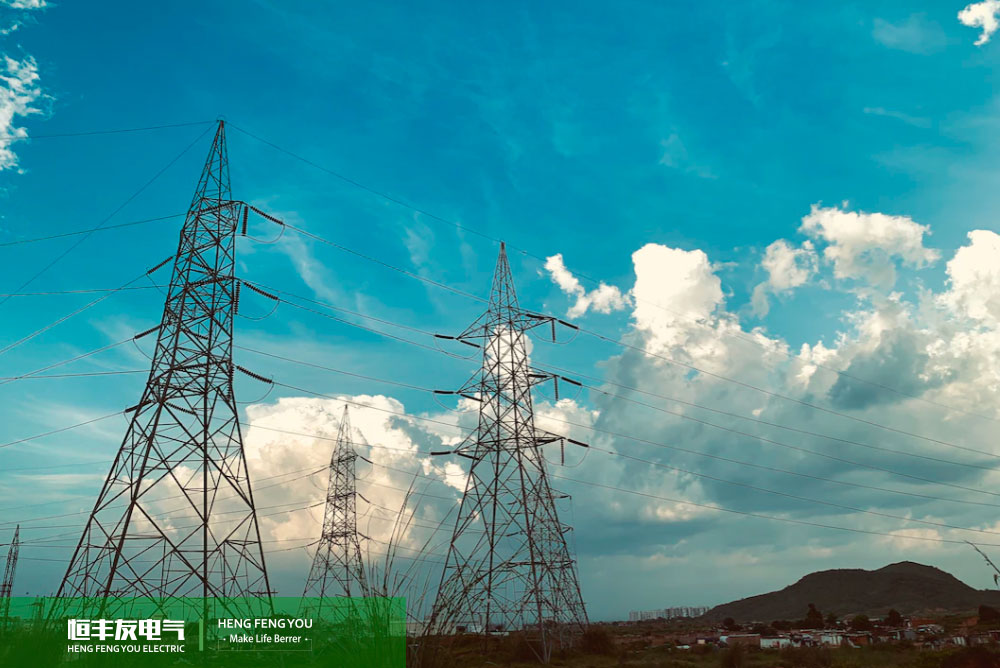How to determine the voltage of power towers
Transmission lines are supported by transmission towers one by one, with high voltage levels using "iron towers" and low voltage levels such as those found in residential areas generally using "wooden poles" or "cement poles", collectively referred to as "towers". High voltage level lines require a larger safety distance, so they need to be erected very high. Only iron towers can bear tens of tons of lines, and a single power pole cannot be erected so high or with such great support, so power poles are all of lower voltage level.
How to determine the voltage level of power tower
The first method: Look at the height. The higher the voltage level, the greater the distance to ground.
Transmission lines are supported by transmission towers one by one, with high voltage levels using "iron towers" and low voltage levels such as those found in residential areas generally using "wooden poles" or "cement poles", collectively referred to as "towers". High voltage level lines require a larger safety distance, so they need to be erected very high. Only iron towers can bear tens of tons of lines, and a single power pole cannot be erected so high or with such great support, so power poles are all of lower voltage level.
How to determine the voltage level of power tower
The first method: Look at the height. The higher the voltage level, the greater the distance to ground.

According to the "Design Specification for Overhead Transmission Lines", the distance between transmission lines with a voltage level of 1000 kV and the ground should be around 25 meters. Once the visual distance between the transmission line and the ground exceeds 25 meters, it must be an ultra-high voltage line on a tall platform. Usually, overhead lines need to consider wire sag and insulator length, so the actual distance to ground should be larger. Generally speaking, 110 kV, 220 kV, and 330 kV are more than 10 meters above the ground, 500 kV is more than 20 meters above the ground, 750 kV is more than 25 meters, and 1000 kV is more than 35 meters.
The second method: Look at the number of insulators.
Usually, for 750 kV transmission lines, the number of insulators exceeds 35.
The 500 kV transmission line has approximately 30 insulator pieces.
The number of insulator pieces for a 330 kV transmission line is approximately 20 pieces.
The number of insulators for a 220 kV transmission line is 12-14.
The number of insulators for 110 kV transmission lines is approximately 7-9.
Note: If in high altitude and heavily polluted areas, the number of insulators will increase slightly
The third method is to determine the voltage level of the transmission line by the number of wire splits.
Usually, 1000 kV transmission lines use 8 bundled conductors, which means there are 8 conductors in one phase.
The 750 kV transmission line uses 6 bundled conductors, with each phase consisting of 6 conductors.
A 500 kV transmission line consists of four bundled conductors, each phase consisting of four conductors.
220 kV transmission line, using 2 bundled conductors. 110 kV, usually using only one wire.
HENGFENGYOU ELECTRIC GROUP, is an electrical enterprise with transmission and distribution industry as its main business, integrating product research and development, manufacturing and trade. Designated suppliers for the world's top 500 enterprises .Its main products include power transformers, medium and low voltage switchgear, distribution panel ,circuit breakers, transmission tower ,Cable and other power distribution equipment , HENGFENGYOU ELECTRIC GROUP has been working hard to provide the best transmission, distribution solutions for users all over the world. www.transmission-tower.com ; sales@hengfengyou.com ; WhatsApp:+86158 5325 2696(Jack)
